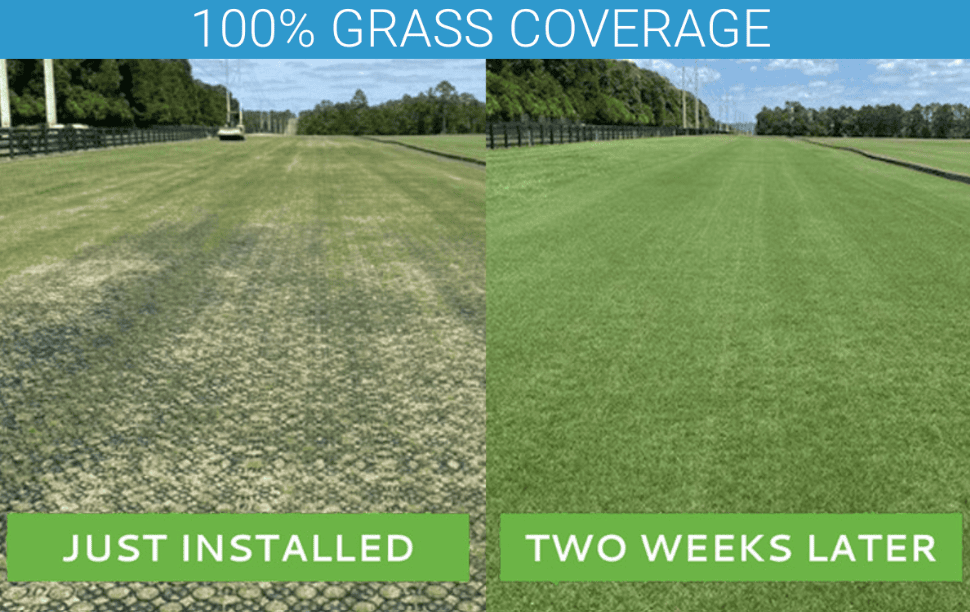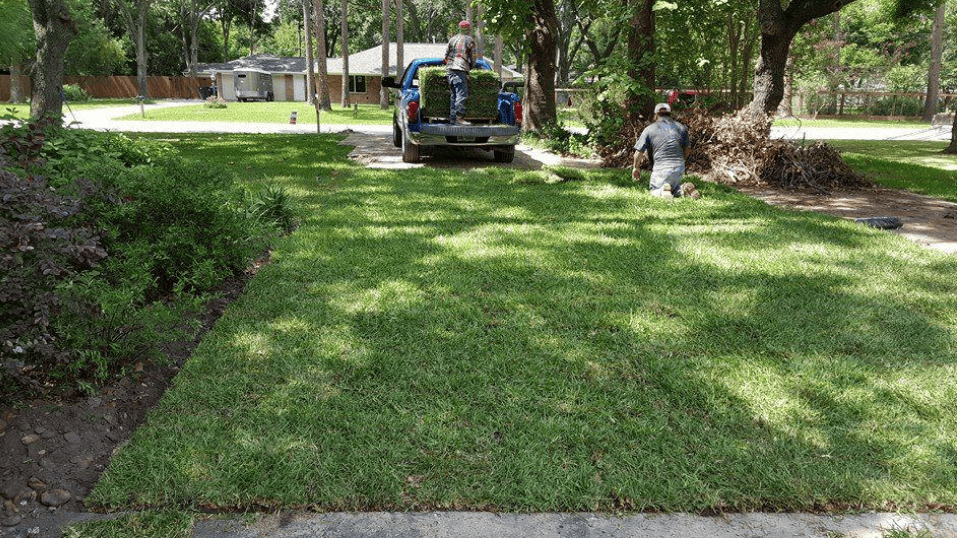The construction industry is changing towards greener practices for a sustainable future. Sustainable construction materials are key to reducing environmental impact and improving the durability of structures. These materials play a crucial role in revolutionizing the industry’s commitment to sustainability and building in harmony with nature.

The Building Industry Shift to Sustainable/Green Construction Materials
The building industry is increasingly embracing sustainable materials due to growing environmental awareness and the urgent need to address climate change.
The Importance of Sustainable Building Materials
What Makes a Building Material Sustainable?
A building material is considered sustainable if it meets certain environmental and social criteria. Key factors include:
- The material’s ability to reduce carbon footprint
- It must minimize energy consumption during production
- Comes from renewable or recycled sources
- Offers better energy efficiency to lower long-term operational costs
- Has a longer lifespan that reduces the need for frequent replacement, in order to limit waste
Regulatory pressures and evolving consumer preferences also drive this shift, as more people demand eco-friendly living spaces. Technological advancements have made sustainable materials more accessible and cost-effective to encourage their use in modern construction.
The Most Popular Sustainable Building Materials Used Today
1. Recycled Plastic and Polymeric Timbers
Recycled plastics are increasingly used in construction as an eco-friendly alternative to traditional materials.
Uses
Polymeric timbers, made from a blend of recycled and virgin plastics, are used in structures like fences and picnic tables. Recycled plastics are also spun into fibers for carpets and used in products like cable pipes and PVC windows.
Benefits
Recycled plastic materials offer significant environmental benefits such as reduced landfill waste and to curb deforestation. They also have superior durability and weather resistance that leads to longer life spans and reduced maintenance costs.
2. Reclaimed Wood
Reclaimed wood that has been sourced from retired barns, excavation sites, and shipping pallets is an environmentally responsible solution.
Uses
While it’s lighter and may need additional treatment against insects and degradation, its applications in cabinetry, flooring, and structural framing are notable for their sustainability.
Benefits
Reclaimed wood not only boosts the aesthetic appeal of a building, it also reduces the demand for fresh timber and contributes to forest conservation. It provides a distinct, rustic charm that makes each piece unique and rich with history.
3. Recycled Steel
Recycled steel is an eco-friendly material derived from scrap metal and end-of-life vehicles and appliances.
Uses
Its use in roofing, building facades, and structural support highlights its durability and eco-friendliness.
Benefits
This resource-efficient approach not only reduces the need for mining and processing virgin materials, it also significantly decreases the energy consumption and CO2 emissions associated with conventional steel production.
4. Plant-Based Polyurethane Rigid Foam
Made from natural materials like bamboo, hemp, and kelp, it offers excellent thermal insulation, resistance to mold and pests, and soundproofing qualities.
Uses
Originally innovated for surfboards, polyurethane rigid foam is now widely used for insulation in buildings.
Benefits
The plant-based polyurethane rigid foam is a sustainable option that reduces reliance on petroleum-based materials to minimize environmental harm.
5. Sheep’s Wool Insulation
Sheep’s wool insulation is a natural, renewable insulating material derived from the fleece of sheep, without causing harm to the animal.
Uses
It is an excellent heat insulator that is known for its superior moisture regulation and sound absorption properties. Sheep’s wool is an effective natural insulator that provides both energy efficiency and soundproofing.
Benefits
Sheep’s wool insulation offers numerous benefits such as minimal environmental impact due to its renewable source, significantly less energy for production compared to synthetic insulators, and excellent performance in both warm and cold climates. Its natural flame resistance and ability to regulate indoor humidity levels further make it a prime choice for sustainable construction.
6. Rammed Earth
Rammed earth is an ancient construction technique that has been experiencing a resurgence in the sustainable building field. It involves the compacting (or “ramming”) of damp earth mixture into an externally supported frame or mold in order to create solid walls of earth. Once the material is dried, the frame can be removed to reveal a strong, durable structure.
Uses
Rammed earth is used in walls, floors, and even in the construction of entire buildings. It is especially suitable for low-rise construction and can be left exposed or covered with plaster for aesthetic purposes.
Benefits
It is an environmentally-friendly construction method, as it primarily uses local soil to reduce the transportation and manufacturing impacts. Rammed earth provides excellent thermal mass, helps to moderate indoor temperatures, and reduces the need for artificial heating and cooling. This construction method is also highly durable and can last hundreds of years if properly maintained.
7. Mud Brick
Mud brick, also known as adobe, is a time-honored construction material made from earth and water, and often enhanced with organic materials like straw for added strength and durability.
Uses
Traditionally, mud bricks are used for constructing homes, particularly in developing countries. They are ideal for low-rise construction and can be left exposed or plastered for aesthetic purposes.
Benefits
The production of mud bricks is energy-efficient and produces minimal waste, which makes it a highly sustainable choice. Buildings made from mud brick have excellent thermal performance that keeps the interiors cool during the summer and warm during the winter. This natural temperature regulation reduces energy costs associated with heating and cooling systems. Mud bricks are also biodegradable and recyclable to further enhance their eco-credentials.
8. Hempcrete
Hempcrete is an innovative and sustainable material that is made from hemp fibers, lime, and water. It is lightweight, breathable, and provides excellent insulation, which makes it a popular choice in the green construction industry.
Uses
Hempcrete is mainly used as insulation in new build houses or for renovating old buildings. It is ideal for wall, floor, roof, and attic insulation.
Benefits
Hempcrete is carbon-negative, which means that it absorbs more CO2 during hemp plant growth than emitted during production. This unique characteristic makes it an excellent option for sustainable and eco-conscious projects. It is also strong, durable, and recyclable, to further enhance its sustainability credentials.
9. Pre-Fabricated Wood Products
Pre-fabricated wood products are made off-site in standardized sections and put together on-site. They are a sustainable and eco-friendly solution for construction.
Uses
These products, including trusses, frames, and even whole buildings, are used in various construction applications due to their flexibility, versatility, and quick assembly time.
Benefits
They provide several benefits such as reduced construction waste, minimized onsite labor, and shortened construction time.
10. Mass Timbers
Mass timber encompasses a range of framing styles that utilize solid wood panels for erecting walls, floors, and roofs. This approach offers not only structural integrity, it also showcases the aesthetic appeal and adaptability of wood as a construction material. It includes pioneering products such as glued laminated timber (glulam), cross-laminated timber (CLT), and laminated strand lumber.
Uses
Mass timber finds extensive use in a diverse range of applications, including multi-story buildings, bridges, and long-span structures. Its exceptional strength-to-weight ratio makes it highly suitable for large-scale constructions.
Benefits
Mass timber is considered highly sustainable as it is derived from a renewable resource. It serves as a carbon sink that effectively stores the CO2 absorbed by trees during their growth phase, so it helps contribute to the reduction of greenhouse gas emissions. Moreover, mass timber has exceptional thermal performance, fire resistance, and aesthetic appeal, which makes it a favored option for environmentally-friendly construction practices.
11. Salvage Materials
Salvage materials refer to used or recycled materials that can be repurposed for new construction projects. Frequently sourced from deconstructed or renovated structures, these materials encompass reclaimed wood, metal, bricks, glass, and other elements.
Uses
Salvage materials have diverse applications in construction, spanning from framing and flooring to roofing and interior design elements.
Benefits
Incorporating salvage materials in construction offers numerous advantages:
Reduces the reliance on new resources
Aids in diverting waste away from landfills
Materials are usually less expensive
12. American Bamboo
Guadua angustifolia, commonly known as American Bamboo, is a rapidly growing plant that is predominantly found in the Americas. It is increasingly being acknowledged as a sustainable construction material because of its exceptional properties and environmentally-conscious characteristics.
Uses
This versatile material is used in different areas like flooring, wall cladding, furniture, and even structural frames for buildings. Its strength and durability make it an excellent alternative to traditional hardwoods.
Benefits
American Bamboo is a highly-renewable resource that matures in just 3-5 years, much faster than hardwoods that take decades. Its rapid growth makes it an excellent carbon sink, and it absorbs substantial amounts of CO2 from the atmosphere. Bamboo is also impressively strong and durable, and it is comparable to steel in terms of tensile strength. Its lightweight nature contributes to cost-effective transportation to help reduce the carbon footprint in construction.
13. Mycelium
Mycelium, the vegetative part of a fungus, is composed of a network of delicate white filaments. This fascinating organic material is currently being studied for its immense potential to transform sustainable construction practices.
Uses
Mycelium is an exceptional material with the ability to produce building blocks. These blocks possess remarkable strength and lightness, while also serving as excellent insulators. Their practical applications span a wide range, such as wall insulation, acoustic dampening, and even structural components in the construction industry.
Benefits
Mycelium-based products are renowned for their organic composition, compostability, and utilization of waste materials, which makes them an exceptional zero-waste construction alternative. Not only do they exhibit fire resistance and excellent insulation properties, they also refrain from emitting harmful substances during production and disposal. These remarkable attributes establish mycelium products as a viable and sustainable option for traditional construction materials. The growth of mycelium aids in the absorption of CO2 which helps to make a significant contribution to carbon sequestration.
14. Cork Products
Cork is a renewable and sustainable material that is derived from the bark of the cork oak tree. Its unique properties like lightness, elasticity, impermeability, and thermal and acoustic insulation make it an interesting choice for sustainable construction.
Uses
Cork is often used in construction for insulation, flooring, wall coverings, and even as a structural material in some cases. Its lightweight, resilient, and natural insulation properties make it a versatile and effective construction material.
Benefits
Cork is a renewable resource that is harvested from the bark of cork trees without causing any harm to the tree. This sustainable harvesting method, coupled with cork’s biodegradability, makes it an environmentally-friendly construction choice.
Cork has natural thermal and acoustic insulation properties that can enhance the energy efficiency of buildings by reducing energy use and the associated carbon footprint.
15. TRUEGRID® Permeable Pavers: A Sustainable Solution

TRUEGRID®, a leading provider of eco-friendly construction solutions, offers products that embrace sustainability principles. Their pavers, which are crafted from 100% post-consumer recycled plastic, ARE a long-lasting, permeable, and environmentally-friendly option for a wide range of applications.
Uses
TRUEGRID® permeable pavers are highly versatile and can be used for various applications such as driveways, parking lots, trails, and high-traffic areas.
With a durable design, they can withstand heavy loads, which makes them suitable for both residential and commercial construction projects. Their exceptional water percolation capabilities make them an excellent solution for stormwater management and flood prevention.
Benefits

TRUEGRID® permeable pavers have several benefits. They are made entirely from 100% post-consumer recycled plastic to help reduce plastic waste. Their permeability also helps with water management and flood prevention, which makes them a sustainable and practical choice for construction projects.
Upgrade Your Construction Practices with TRUEGRID® Sustainable Solutions
Embrace the future of sustainable construction with TRUEGRID® permeable pavers. Opt for an environmentally friendly choice that not only meets your construction needs, but also contributes to a greener and healthier planet!
Contact us today for more information.



